Drifted From the Past - Untaling Some of the Icons
|
Dated 2011 Aug 31 Wed 2 Shawal 1432H. The Knife and the Comb
Among our earliest house-hold tools since started our life together. Kept unused under the console cooker in home in Sg Merab. They were exposed by Muzani-CB 2011 Aug 25 Thu 25 Ramadan 1432H night to refurbish the area for better performance. Some of them were as early as from 1976 when we first settled in Damansara Utama to start our new phase of trial of life. One of them is this knife. Azizah brought it with her from TGG when I first took her to Damansara, 1976 Nov 14, to start the life together. In fact it was her only belonging that she took with her, apart from her dresses. And it survived through various phases of our journey. The first knife Azizah used in her first kitchen in Damanara Utama. No 7, Jln SS 22/15. When she acquired much better knives later, it was neglected, but was kept unused. Through our stay in England, then to Bangi, and eventually Sg Merab. Moving together from place to place, from house to house. Kept in one container in one place, then another container, then another, then another place. It was not discarded. It was not thrown away. It appeared on and off, once in a while, but we kept on keeping it. Now it's time to recover it, and to archive it, and let it take care itself in the course of our own respective fate and destiny. Together with this orange comb, Azizah's favourite from day 1 she acquired it in Dec 1979 in Manchester, England. Unlike the knife, she used the comb, most of the times, and not other combs, but took care of its safety and well being. She would search all places in the house if a day the comb disappeared from her sight. Until she found it. She used the comb on herself. I used the comb too. She used the comb when she cut my hair. And she used it to comb her children's hair, and later her grandchildren's. To her last day at home, 2010 Jun 18 Fri evening. Dated 2011 May 17 Tue 13 J Akhir 1432H. Alam Shah Ren-revisited
Ca eleven years ago. Dated back to 2000 Jul 22, 5 pm Sat in then Sekolah Alam Shah (SAS), Jalan Yaacob Latif, Bandar Tun Razak, Kuala Lumpur, on a routine visit to Zidni, then in F5. And today, 2011 May 17 Tue 13 J Akhir 1432H, on a similar routine visit to Ashbihani (SB), F4, on the same spot eleven years ago. The school unfortunately had changed to Sekolah Menengah Sains Alam Shah (ASIS), since 2003. Over the eleven years things changed by evolution and by revolution. Asri was then five months in his mother's womb. Asri today, 11, thus seated on his mother's previous spot. His brothers and sisters grew up over the years not as fast as him, even though SB and CB are obvious. Rubaini and Malini since then had born three children each. Muzani is very soon, but Zidni does not appear to (I mean their wives Niza, Intan respectively). Alya is in the transition. They are here today 2011 May 17 Tue 13 J Akhir 1432H to remember the moment eleven years ago, 2000, Jul 22, 5 pm Sat.
Dated 2011 May 8 Sun 4 J Akhir 1432H. The Typewriter Imperial 290 Litton. Dated back to 1978, in Damansara Utama, Kuala Lumpur, when I was only with Azizah at the beginning of my career life, a new phase in my trial of life. Captured, 2011 May 8 Sun, in Pengkalan Arang, Kuala Terengganu, the Imperial 290 Litton, was bought, 1978 Mar 23 Thu $335, in Jln Tuanku Abdul Rahman, Kuala Lumpur. A machine I always imagine to own it since the first time I saw one as long ago as in 1965 in the home of CheGu Halim in Tanjung belakang Kelab on a visit taken to by his younger brother, my hostel buddy, Mohd Nor Hassan. I always wanted it, because I knew what it could do for me. Along the time, I had seen some more in the offices of various places, including the school office, but they were of non-portable type, and bigger, and thus more expensive, and thus they were not of my interest. I bought the machine because I thought of writing a lot. Books, articles, papers etc. I started with that I had rapport with En Yusof of Fajar Bakti who had trusted me in writing an STP book. Initially Azizah helped, decipering my hand writing draft, during her initial period of conceive. Then she had to give up for our first baby. Which made me doing it myself. Seriously in 1979. The book was eventually published in 1981 when we were in England for my doctorate. By then it was the "Golf Ball" era. I bought one in Manchester, a Silver Reed, obviously for my PhD thesis. I was very delighted to eventually owned a machine, reasonably elegent, that I always wanted since I first saw it in 1965. And it was taken to Malaysia when I returned in 1983. Because of which the Imperial 290 Litton was made to retire. My sister Ani then had just began her career as a teacher. She needed a writing machine. And that was how it came to Terengganu. To this day. And it still works, printing a character at a time. Writing with passion associates well with an owning of a printing machine, because ultimately it is the machine that transforms what is written into the pipeline towards publication. There was no way a hand-writing is acceptable. Those days to own a machine that print letters beautifully was a quest. Nowadays, in ICT era, a printing machine could easily be acquired. Affordable in fact to even kiddies. It even prints pictures. And in colour too. Updated: 2011 Sep 2 Fri: The Imperial 290 Litton was taken back to Sg Merab 2011 Aug 25 Thu. And was archived together with other obsolete "modern" equipments.
Dated 2011 Jan 29 Sat 24 Safar 1432H. The Cuff-Link The Cuff-Link. Dated back to 1969, when I was in Alam Shah School (SAS), Cheras, Kuala Lumpur. I spotted the objects, still many of them, in a Photo Shop in Seri Serdang on a mission to have passport-size photo for SB to register in SMS Alam Shah 2011 Feb 7 Mon. What a coincidence. The object was one of the popular icon in those day for a present to boys. Selangor Emporium Jln Tuanku Abdul Rahman, Kg Baru Sunday Market, were places where students searched for such icons. I was presented one, in 1969 Apr on my BD. Azizah kept it safe from day-1 she saw it in 1976, to this day. I never told her how I got. It survived my 1970 final year in SAS, thro' 1971 to 1974 in UKM, thro' to 1976 in Manchester, and eventually in Azizah's period for 34 years. To this date in our wardrobe.
Dated 2010 Aug 21. The Pilot Fountain Pen The Fountain Pen. Dated back to 1967, when I was in Alam Shah School, Cheras, Kuala Lumpur. I always wanted a good fountain pen, since I was in primary school, soon after we were allowed to write in script, in std four, 1961. But I could not afford it. Further more K Trg was a very small town, such a good was very rare. Until I went to SAS in K Lumpur where there was sophistication. The brand "Pilot" was always in my mind. "Parker" was too expensive, and largely were not for massive writing. In SAS, KL, I was rather effluent with a sufficient scholarship. I bought this one in a shop somewhere in Lebuh Pasar. A rather back-alley street in the vicinity of Foch Ave on the way to Malacca Street. It costed less than ten ringgit. Of course during my career time, I have many other fountain pens. The "Parker" were no exceptional. But this "Pilot" one was always my pen. And the ink was always the black "Quink". I kept it dearly throughout the times, until today. Through the four years of SAS, three years of UKM, five and half years in England, and through to my career life, to my retirement. It was always close to me in whatever period of my times. I used it from time to time, scribling somethings, to make sure it was functioning. Periodically, I dismantled it into its pieces, including the nib, and washed it with warm water, to free from black deposit of dried ink after a period of unused. It stopped functioning when the rubber "belly" which stores the ink became hardened, crept, and brittle, and eventually burst, and replacement spare part was not available. (Dated: 2008 Apr 20)
They were foot-padel driven, and thus came with its own stand. One needed only a chair or a stool to run it. And it sews straight. In the 1960's, with only two colours of thread: black and white. When I was about ten or so, my mother let me sew on simple simple fabrics like that of "kain lepas barat" or "batik sarong". She could not let it on "kain pelikat" because that needed the squares pattern to be matched, and I was not yet skilfull enough. And I went to the hostel before I acquired the skill. Sewing machine of this kind are still available today, but many had been modified into an electric-motor driven. And some equipped with device that sew not just straight. Older models I saw in Kedai Tepoh was hand driven, the hand handle being at the "fly wheel". In Tepoh the sarong buyers sew those sarong they just bought, otherwise they had to do it by hand.
"Beras" and "pulut" were milled after an overnight soak in the water. The end was a thick emulsion of the rice powder, which then was diluted and blended with other ingredients with a thorough mixing. They were made by carving and chipping two pieces of granite blocks. The masses and their rotary action would deliver enough force to break perhaps every granule in the water-softened rice beads, thus extracts out every flavour in them. And the wet-milling kept them from getting evaporated.
Like that of the rice and pulut, the spices mixture were pre-soaked in the water, but for a shorter time, perhaps a couple of hours only. On walimah occasions, neighbours lent theirs, for several were needed to wet-mill all the spices needed to curry a cow or a buffalo of beef. "Replicas" are currently available in some markets, but they are concrete-molded. The same way a house pillar is concreted, but with a modified concrete formulation, perhaps with a large fraction of selected granite chunks, and a different cement-water ratios. Unlike the original which were sliced and ground from a block piece of granite.
Lesung. Wooden "pestle and mortar". Traditionally it was for pulverising the food materials. My mother used to have one, and I helped my mother with it a lot. Sun-dried padi was de-husked by pounding it in this "lesung". Making dry rice powder was in this lesung. The rice (beras) was first soaked overnight. Then, it was pounded in ths lesung, seived using a metal "ayakan". Mixture of fish-sago was also doughed in this lesung to make "keropok lekor". To make "laksa" one also needs this lesung. The sound of "alu" pounding in the lesung was best poeted during the harvest season when "emping" was made. The fried young padi seeds ("padi muda") being pounded to a thin oval disc of emping created a rhythmic high pitch sound audible from many miles away at night. In the classic novel, it was blended with the love story of many young villagers. 2008 Jan 3 Thu, I spotted this one exact non-replica lesung in Sutera Beach Resort, Merang. It was half-filled with sand, and used as a giant ash-tray. N.B. A local say for a dimple is "lesung pipit", with the noun "lesung" originated from this device, while the adjective "pipit" is the name for a small roaming birds that eat padi; the whole noun thus means the "lesung" for the bird pipit to similarly works with. Another possible derivation is the size of the "lesung" on the cheek. Pipit was an icon for a small object.
We used to have another one like this in the kitchen section of the house. It was for the foodstuff, or for my mother to prepare food. It was not as eating table. These were the only table we had at home.
"Chembor". The size of an A-class egg. Made from copper. It had a lid, and covers well with a fixing groove. It was a piece in a set of similar or equivalent pieces. All the pieces were placed in a container, normally without a lid and similarly made from copper. The set was used to keep various things, normally small items. Some used it as a betel set which hold the "gambir" and "pinang". Not for the "kapur", because calcium hydroxide that made the "kapur" may react with the copper. If the set was used as a betel set, normally an odd one made from porceilin was added to hold the "kapur". Some others used the set for "jewelary" safe keeping.
PokNgoh was one sugar maker. His "factory" was near his mother's home, TokSu which was just behind our home. He himself and his family lived in Pak Katak. For as long as I could remember he made coconut sugar ("nnisan") all his life until he no longer able climb the coconut tree. In the "factory", the collected sap were boiled in a big "kawah" to dryness, and casted into disc moulds ("keret" - made from sun-dried "mengkuang" or "pandan" leaves) while in a very viscous state. The quality of the sugar is determined by the additive ("laru") added during the boiling, which was the trade secret of PokNgoh. The kiln ("rokmo") was made from clay in a circular shape. The burning firewoods were fed from below which is at the ground level. The coconut trees PokNgoh climbed were not all his trees. Many belonged to others on "pawah" basis. Like other "pawah" system, the resulted sugar were divided equally (half each) between the coconut tree owner and PokNgoh. PokNgoh and TokSu were just neighbours every one would keep on remembering. When I was a little boy, I used to "visit" PokNgoh's factory in the afternoon, at the time the sugar was about to get ready. I waited patiently until the very sweet discs were cleaned to finish. I was aiming at the "debris" ("kerak lilit") which PokNgoh knew very well and never failed to furnish. But the more tastier kerak was the one at the bottom of the kawah ("kerak nnisan") which when PokNgoh scratched it out from the bottom of the kawah with a metal drapper ("sodet") it give a sound that will drive every kid around for the sweet. Sometimes when PokNgoh was high up on top of the coconut tree, in the late morning, I would shout at him (or my mother helped) for a few young coconut leaves ("puchuk nyior"). I was going to school, and the leaves were for the handicraft lessons ("pendidikan seni") in the school. PokNgoh would snatch a few, rolled and knotted them and throw down. I thanked PokNgoh and run to the school. I missed PokNgoh's "kerak nnisan" during school days.
Spotted, 2008 May 23 Fri, the commercialised version of what was "lempeng gandum", but with aka name "lempeng nyior", in a 24-hr eatery in Gong Badak, near UDM Kusza campus. It was not the "pedigree" though, the one my mother cooked and we "fight" for a bite. The recipe was nearly the same, with some strips of coconut meat. Perhaps some coconut milk was added. However it was fried in margeraine, instead of dry-fry. It was more or less an unskilly-made version of "roti canai". And it eaten with the curry sauce.
There had been many more types of ubi. In my place, MakTehCheNik used to plant all sorts of ubi. Apart from ubi kayu and ubi stela, she planted also "ubi besar", "ubi torok", "ubi keling", and "ubi gadong".
It was made from Scirpus mucronatus (kercut) were widely grown in marshland of the hinterland. They were cut, bundled, and transported to cottage mat makers (like Che Wan Bakar in my place). To make the mat, they were soaked in a thick muddy water (celup) and sun-dried. They were then pounded by a lance-wooden pestle on a flat wooden bed to flatten (tumbuk), after which each piece was entered into a certain woven pattern (anyam). No specialised tools were needed, only finger-skills plus a sharp knife to trim the finishing. A mat of about 3 by 6 ft cost less than a ringgit. A mat made from this flora was my only cover on my bed in SS hostel all along in 1964.
Popinjay to Parrot, both are green birds captured on a fragrance soap of the sixties. It took a trained eyes one evening in a superstore and many decades of experience to notice that popinjay had transformed into a parrot, because they both are in the same garden. The popinjay full show was "Popinjay Toilet Soap". It was the first bath soap that I had when I began my hostel boarding in 1964 Jan. Perhaps it was the cheapest compared to those of the "mainstream" fragrance bath soap. It was the most fragrant. And my sense said it was the nicest smell. Once in 1968 it was promoted with a pair of fork-and-spoon which was just what I needed to continue my hostel boarding in SAS. It was my favourite soap for many decades. I even took several pieces of it in my bag to England in 1974 Sep and again 1979 Sep. It survived for many decades until recently the trained eyes spotted it was changed to "Parrot Botanicals" and with some Thais writing on it.
When I was twelve, PekTam let me plough my father's plot myself using all his equipments including the pair of bulls. It was alright during the ploughing, but after that while guiding the bulls for the "reward feeding", the bull strayed uncontrollably into somebody else fields which had already been planted; and caused quite some demage. 2007 Nov 17 Sat, I spotted this ploughing "machine" on the reception lobby of Bukit Keluang Beach Resort, in Tembila, Besut. Unfortunately in a wrong configuration with a cart of a bullock-cart (kereta lembu). No body appeared to have any interest in it.
This picture reminded me a friend in Batu 6, a few years older then me, Nawi, who was a good friend of my cousin, AbangWi. He tried his life a teen-ager by making bread in a shed close to my cousin's coffee shop in Batu 6. Ocassionally I popped in his "factory" while he was baking the bread. And the taste of freshly baked bread is something one needs to self-taste to describe. And in some of the occasional occasions, I brought some eggs. He made the "roti telor" for me. And we devoured it together to the last piece. Then I left the place to board the hostel, 1964 Jan. During the term break I visited Nawi less frequently, and less and less as the years passed. And eventually very rare. Until one day I found out that Nawi had passed away, still a teen ager.
The grass is self-contained. The root congregated towards the nucleus of the ball which hold some soil to contain the nutrients. The leaves are slender, hard, and uninviting to grazers. Don't look like very healthy, more like an arid land dweller of Savanah. Some insects are seen to live together. The life cycle perhaps is like the insects themselves. It started perhaps with a bud which fall to the ground where it collects the soil. The sperical shape began to form as it get blown by the wind and rolls on the ground while getting the spiky leaves grown longer and longer.
During his carpentering years, my father made this buah guntung a lot. They were lathed from a piece of 6x6 inch 5 ft cut of a sawn wood; chengal was preferred because this piece was the wooded part of a house that would be wholly exposed to the weather. An ordinary house had two pieces, position at the two ends of the roof of mother house. The became the highest point. My father "lathe" was just a wooden bracket fixed on the ground at his abdomen height. The raw wood was placed in the bracket horizontally by two bars with a pointed iron piercing the wood to hold it. The wood was made to rotate forward-backward from a long bamboo bow, the tip of which carried a rope which made several loops around the wood before it ended at a foot-step below. A forward spin was by stepping with the foot, and the stronger backward spin was afforded by the bamboo bow which acted like a spring. A steel tool carved the wooden piece into a buah guntung while spinning forward-backward. When my father was lathing, he asked us to stay far from it, especially near the bamboo bow, because the rope might break and the bow would snap into an injurous force.
This place currently is a "made-to-order" restaurant. A minimum 24-hr notice to order the menu. Run by a pensioner, Hj Shukri and his relative-staff. At which 2008 Feb 20 Wed, I took all the eleven of my mantees for an afternoon breezy eating out of "laksam", "laksa" and "nasi dagang".
To a foreigner today, sea-going story at about the estuary of Kuala Terengganu is a tale. No sign of the activity is left. Scarsely spotted fishing jetties are not the fool-proof of the "tale". The place is now swarmed with the modern riverside structure of the type "vibrational" activities. 2007 Sep 20, I spotted this big boat model, dwarfted to a length of about two feet, on the basement of Wisma Darul Iman. Not much story was accompanying its display. To a foreigner, it is merely an object of an artist imagination. It lacked every detail on the actual big boat in the 1960's, especially the sail system and their roping network. The voyage of the big boats and the sea-going of Terengganu people of the coastal area was actually a never-ending stories.
Spotted here, with the hide torn off already, at dusk 2008 Apr 12 Sat at the new Penarik Mosque, Setiu, Terengganu. Such a "geduk" was very instrumental in the education of the children in those days. The elders would let the children of potential to strike when prayer time arrived. The children thus were never eagerless to go to the mosque because they were very eager to strike the gedut. They must keep on going to the mosque in order to get spotted by the elder to be asked to strike the gedut. And knowing that the sound reaches tens of kilometers away, it was a prestigious opportunity to be asked to strike it. To get that opportunity, they must go to the mosque. During my childhood days, I was one of those spotted by the elders to strike the gedut. My play-mate Ripin was much better. He was given the opportunity to "azan", because he had such a high pitch high frequency voice. There were no microphone whatsoever.
Mothers who were mostly housewives spent hours and hours in the kitchen, in the smoke and the black soot, preparing food for the family. And they cooked delicious foods. And cookies in the market were prepared in this kind of kitchen. And especially hard was during Ramadan when it needed to be started at the wee hours for the sahur. The kitchen part of the home were black, full of black soot. And especially the outside of the pot. Many proverbs were coined from the sooty black of the cooker-stove. Which normally anually needed to be "serviced", i.e., removing the ash from the cooker bed. Which in many cases were actually collected for use as fertilizer, usually for the vegetable. My mother used this kind of cooker until late 1970's when BP gas made its introduction. But, boiled water on this stove stayed to poat-1980's because firewoods-boiled water is uncomparably delicious to drink. This piece of firewood stove was spotted in KETENGAH's Herbal Island in Kenyir. Tongkat ali is boiled for the tourist in a well kept traditional methods, even down to the type of wood used to fire it.
"Mancis chap lada", chilly brand matches. Remarkably survived to this date, 2008 Jun. The one I remembered as far as I could remembered since I was a very little boy. It was 5 sen per box. Containing ca 60 sticks. The fire starter for every purpose of making fire, including for the smokers. I bought this piece in Manir Market 2008 Jun 7 Sat, 20 sen. The spelling of "chap" (brand) was accordingly changed to "cap". The rest were verbatim including the colour and the box design and the maker - Kelantan Match Factory. The other contemporary brand then was the "elephant brand" which I believed had ceased. Making the strike-anywhere match (phosphorous based) was advancing to the then traditinal sulphur-based matches. We had quite an experience in 1970 for the school exhibition. I found the matches ubiquitously in England, the Swan barand, when I set foot there in 1974 for my post-graduate studies.
|
|
|||||||||||||||||||||
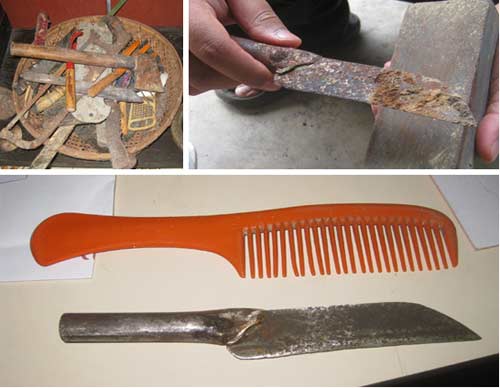




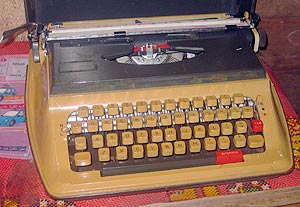

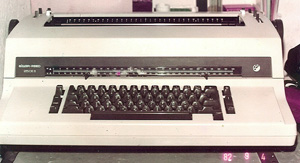
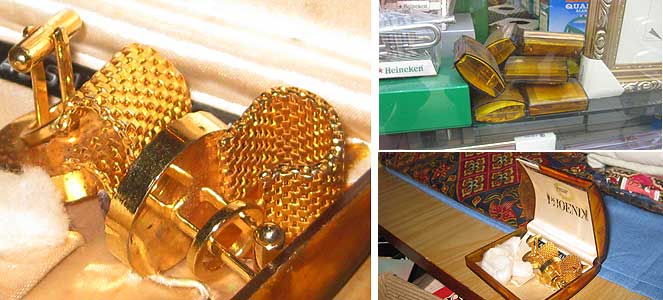
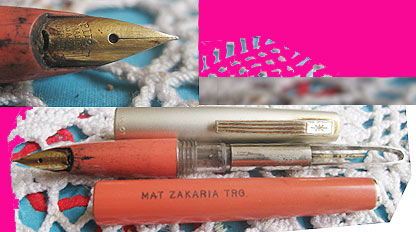
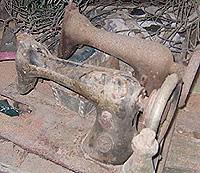
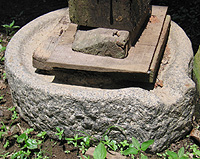
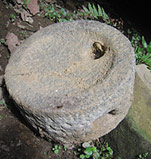
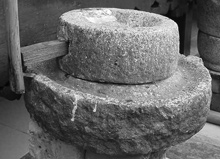
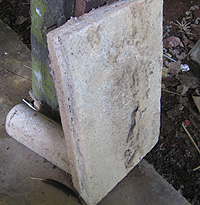
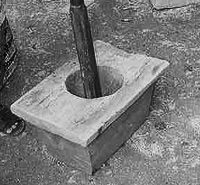
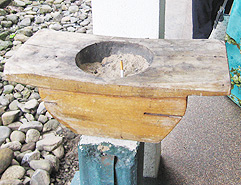


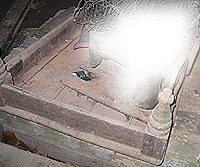
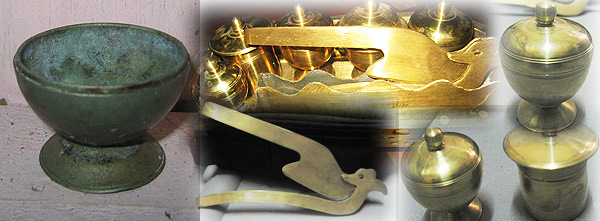
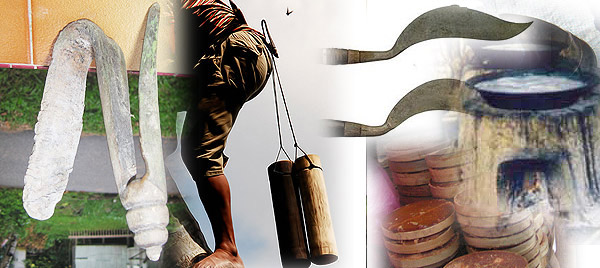
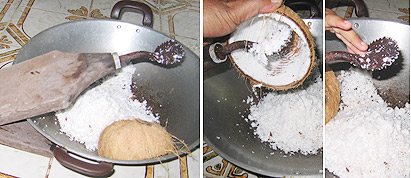
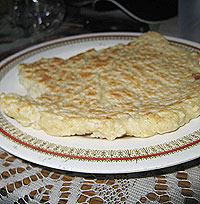

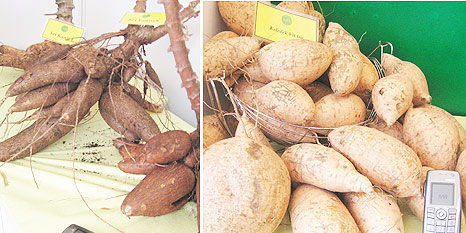 Two kinds of
Two kinds of 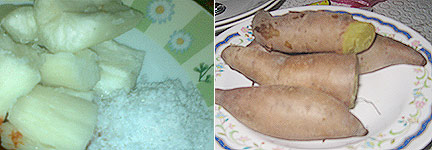 Ubi stela needed a proper planting in a proper plot. That was why it was seasonal, usually before padi season, just before the monsoon arrival. The bed (rong ubi) is to be properly made ("paut rong"), it may take many days, depending on how much it is to be planted. The new plant, also stem-cuts, has to be fertilized, and watered if the rain does not fall on the planting time. The size of the tuber (ubi) varies, but the most paid attention was on the variety. We used to have ubi stela of various color: yellow, purple, and orange. The white was the most common (the one that survived today). Ubi stela is eaten as boiled (most common) at breakfast, evening, night (in fact any time). Occasionally baked. The delicacy from ubi stela is called "belebab", the other ingredients being flour (sometimes mixed with rice flour), coconut sugar (nnisan), and some coconut milk. The premix is then steamed in banana leaf wraper in small bars.
Ubi stela needed a proper planting in a proper plot. That was why it was seasonal, usually before padi season, just before the monsoon arrival. The bed (rong ubi) is to be properly made ("paut rong"), it may take many days, depending on how much it is to be planted. The new plant, also stem-cuts, has to be fertilized, and watered if the rain does not fall on the planting time. The size of the tuber (ubi) varies, but the most paid attention was on the variety. We used to have ubi stela of various color: yellow, purple, and orange. The white was the most common (the one that survived today). Ubi stela is eaten as boiled (most common) at breakfast, evening, night (in fact any time). Occasionally baked. The delicacy from ubi stela is called "belebab", the other ingredients being flour (sometimes mixed with rice flour), coconut sugar (nnisan), and some coconut milk. The premix is then steamed in banana leaf wraper in small bars.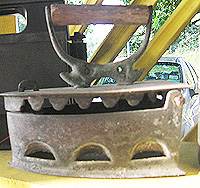
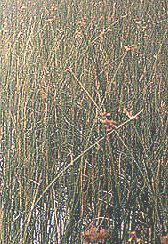
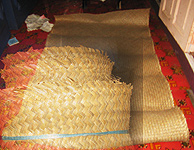 2008 Feb 24 Sun, the evening I arrived from KL weekend, an extincting
2008 Feb 24 Sun, the evening I arrived from KL weekend, an extincting 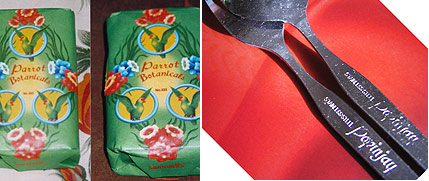
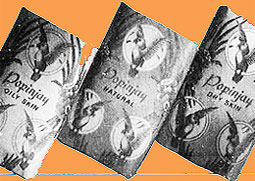
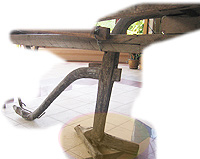

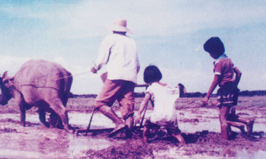

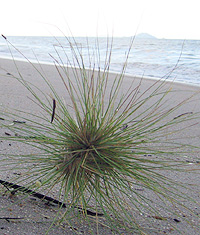

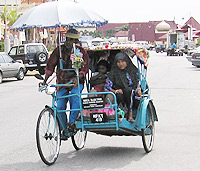
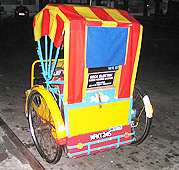
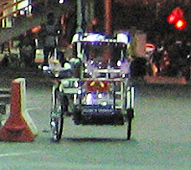
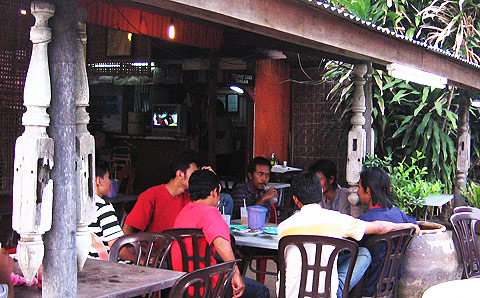 2008 Feb 10 Sun, I spotted three pairs of
2008 Feb 10 Sun, I spotted three pairs of 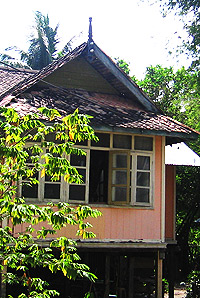
 2008 Feb 20 Wed afternoon, I spotted buah guntung on a perfect one-piece Terengganu house. It was in Hiliran Jejawi, on the river bank below the Duyung Bridge. Once upon a time this house must have belonged to an upper class person. The "index" was that the house with buah guntung, the roof "atap bata" (were imported from Siam), the windows with glass panes, and painted. Only rich people could have a house as nice as this. And yes! It was! The place in the 1950-60 was the place of the celebrated Terengganu seaman, Nakhoda Yusof. A tip of info that was heard was that Nakhoda Yusof moved his living by venturing the sea-going matters in Klang, Selangor. Perhaps he had read before the future sea-going in Terengganu, like he did from the sea sky the east wind and the falling rain. The name "Nakhoda Yusof" sounds so local but echoing all along both banks of Terengganu River from Tanjung-Seberang Takir to Losong-Bukit Datu in which many "Perahu Besar" were seen harbouring.
2008 Feb 20 Wed afternoon, I spotted buah guntung on a perfect one-piece Terengganu house. It was in Hiliran Jejawi, on the river bank below the Duyung Bridge. Once upon a time this house must have belonged to an upper class person. The "index" was that the house with buah guntung, the roof "atap bata" (were imported from Siam), the windows with glass panes, and painted. Only rich people could have a house as nice as this. And yes! It was! The place in the 1950-60 was the place of the celebrated Terengganu seaman, Nakhoda Yusof. A tip of info that was heard was that Nakhoda Yusof moved his living by venturing the sea-going matters in Klang, Selangor. Perhaps he had read before the future sea-going in Terengganu, like he did from the sea sky the east wind and the falling rain. The name "Nakhoda Yusof" sounds so local but echoing all along both banks of Terengganu River from Tanjung-Seberang Takir to Losong-Bukit Datu in which many "Perahu Besar" were seen harbouring.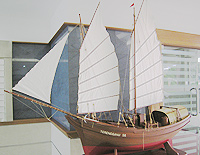

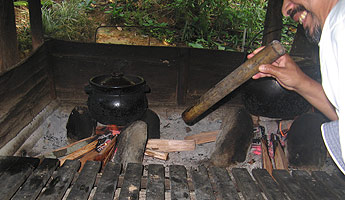
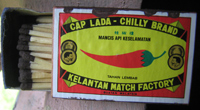
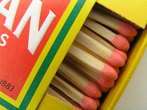
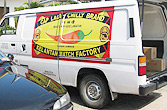
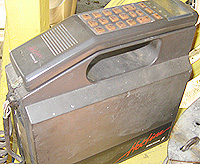 The earliest
The earliest